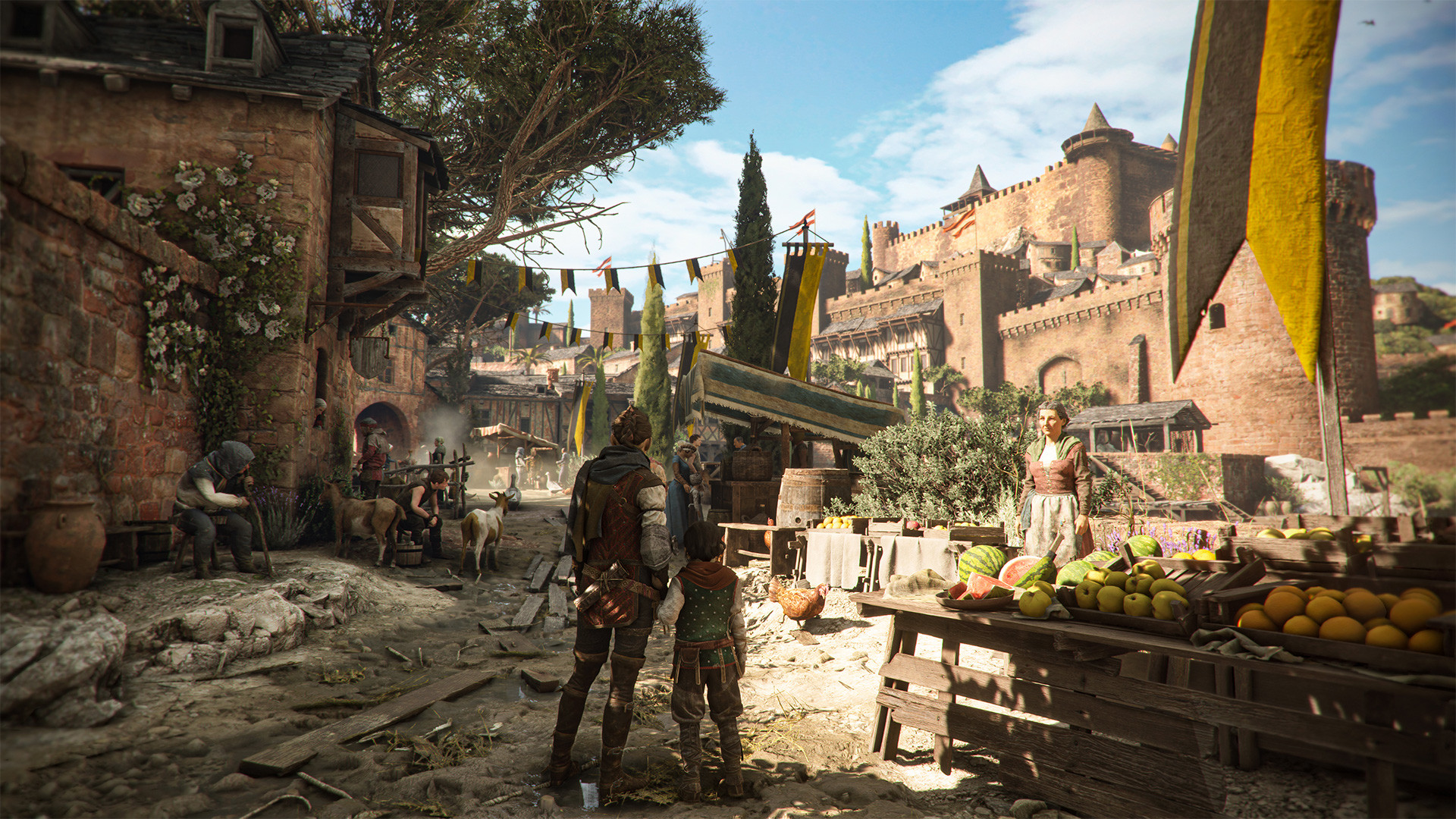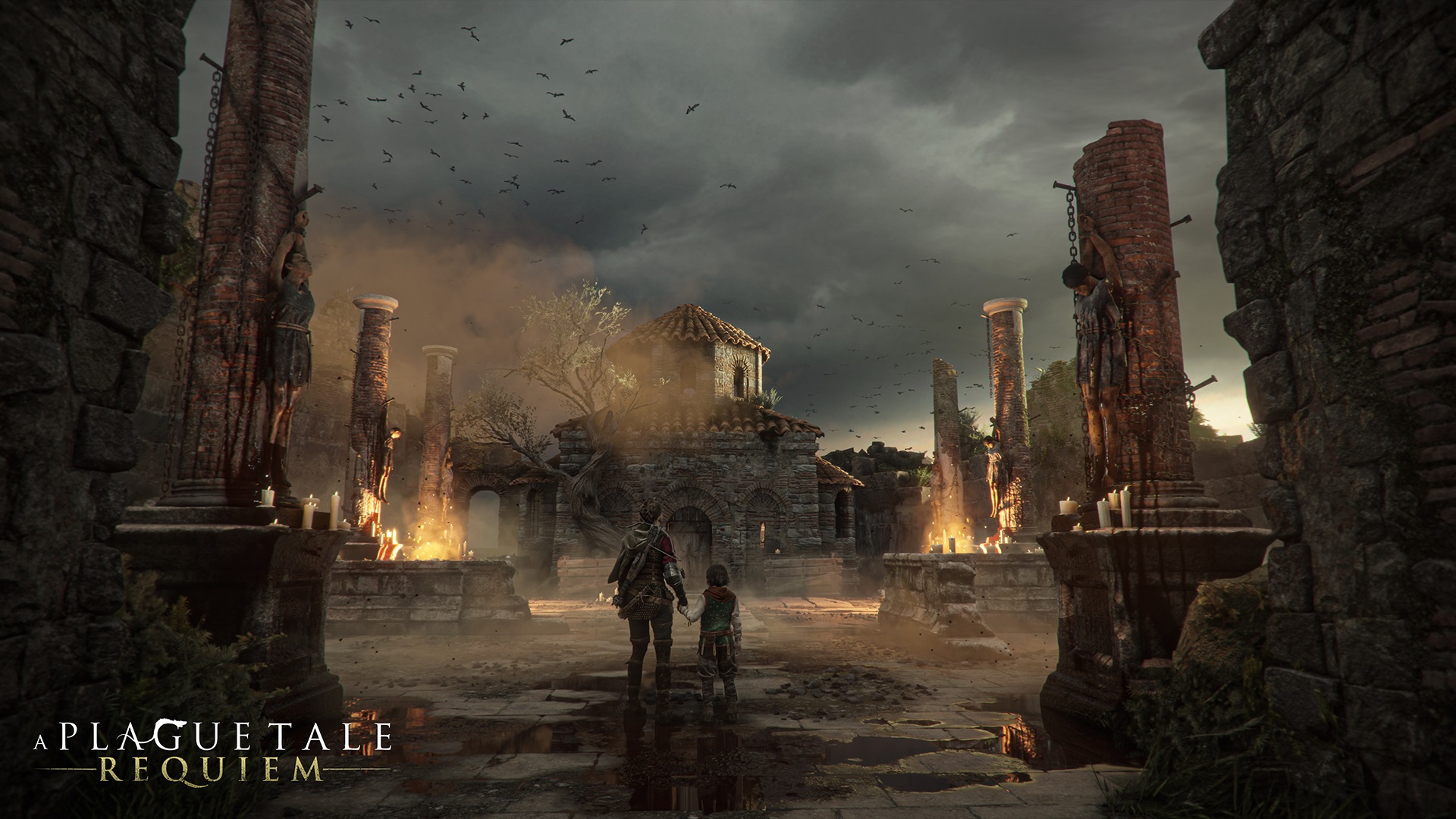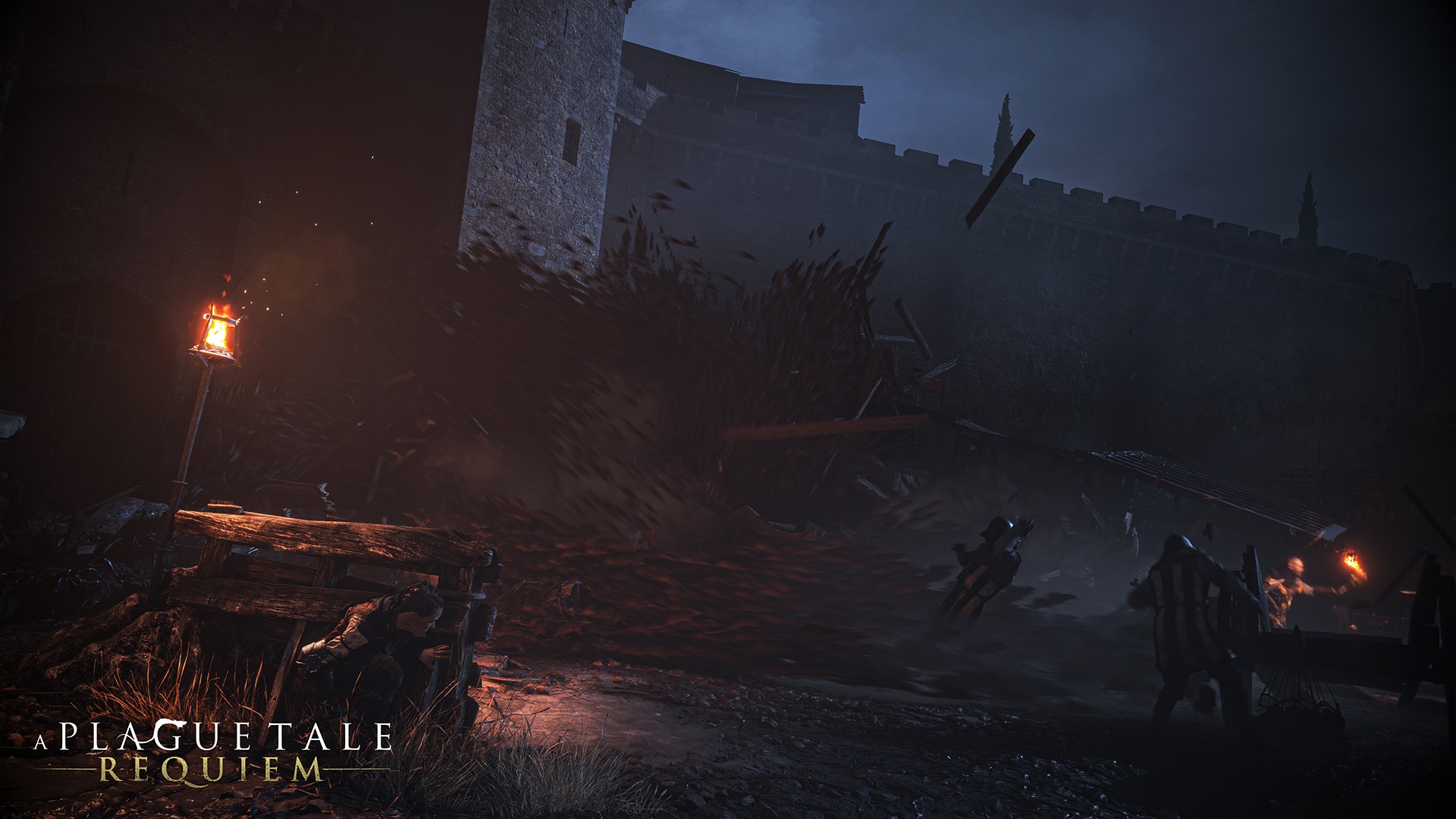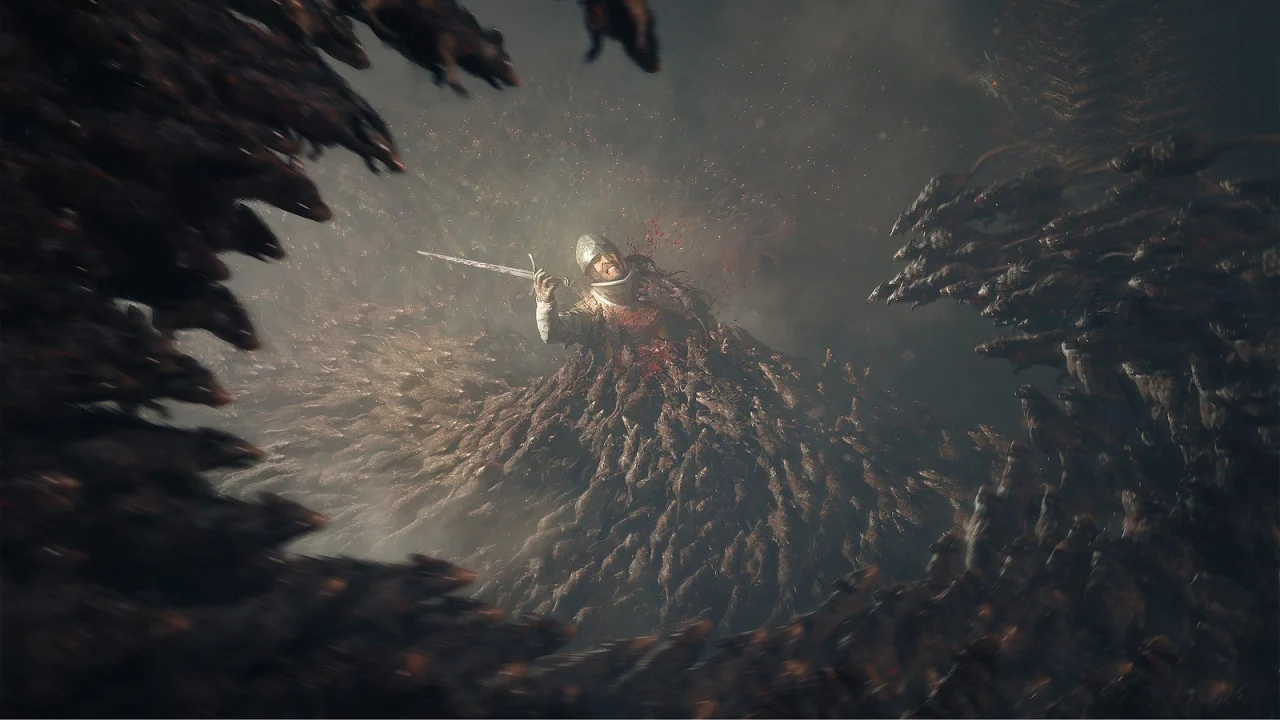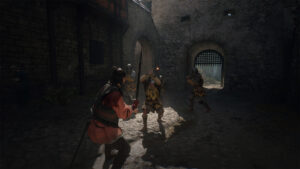
Like its predecessor, A Plague Tale: Requiem is a tight and focused linear experience, but of course, Asobo Studio’s new stealth title also does what sequels should ideally do- it builds upon the foundations of the first game in smart and meaningful ways, delivering a healthy mix of new and returning mechanics. Of course, there will be plenty that you’ll unlock as you make your way deeper into the game, which is something that we’re obviously not going to spoil. However, to help ease you in more quickly as you begin your new journey with Hugo and Amicia, here, we’ve compiled a few basic tips and tricks that you should keep in mind while playing A Plague Tale: Requiem.
EXPLORE THOROUGHLY
As we mentioned earlier, A Plague Tale: Requiem is a linear game that’s constantly moving from location to location, but like its predecessor, it still sprinkles in plenty of opportunities for exploration. Side paths, hidden areas, and locked rooms can be found frequently, and it’s always best to keep an eye out for these optional chances at exploration. There are plenty of collectibles to track down in A Plague Tale: Requiem, while during stealth sections, while it may be tempting to find the quickest and easiest way out of a tough spot, sometimes taking the longer way around might mean coming across more resources in your path.
TOOLS
A Plague Tale: Requiem’s progression system is a straightforward one, and for the most part, it’ll be familiar to those who’ve played Innocence. Amicia can upgrade her gear by using parts that she finds in the environment, but you also require tools to make those upgrades. Parts are relatively easier to find, seeing as they’re far more plentiful, but you’ll come come across tools much less frequently, and more often than not, they won’t be lying around in plain sight. During exploration, keep an eye out for special, larger chests, while any locked rooms or inaccessible areas you might come across that need you to solve a mini-puzzle before letting you enter are also likely to be holding tools inside.
CROSSBOW SPEED
Players can crat upgrades relating to various aspects of gameplay, but even though there isn’t an overwhelming amount of options to choose from, you might still find yourself wondering if there’s anything that you should prioritize above the others. A few hours into the game, Amicia adds a crossbow to her inventory, and as soon as that upgrade path opens up, you should get its first unlock as quickly as possible. That first upgrade increases your crossbow’s reload speed, and this is a weapon that will be very important for the rest of the game, so it’s a nice upgrade to have right off the bat.
AMICIA’S POCKETS
The crossbow upgrade will come a little ways before the game- much earlier than that, you should prioritize upgrading Amicia’s pockets. Really, it should be the first upgrade you get. Gathering resources that are then used to craft alchemical materials is a crucial element of A Plague Tale: Requiem’s gameplay, just as it was in Innocence, so it goes without saying that you can never have too may crafting resources on you. Of course, to begin with, you don’t have a lot of inventory space, so upgrading that as quickly as possible is the smartest way to go.
ARMOURED FOES
With players having access to more tools and more ways to use them, it makes sense that enemies, too, will be more formidable in A Plague Tale: Requiem, and while a lot of that comes down to AI improvements, it can also often boil down to something as simple as enemies that are wearing armour, preventing you from killing them using your slingshot (which, of course, would often be the case in the first game as well). Of course, thanks to the crossbow, dealing with that particular nuisance is much easier. If an enemy wearing a helmet is charging at you, a quick and easy way to get out of that situation is to shoot them in the chest with the crossbow. Similarly, you can knock off the chest pieces of bigger brutes, and then finish them off with a bolt in the heart.
DON’T WASTE KNIVES
Amicia is a much more formidable and ruthless fighter in A Plague Tale: Requiem. The fine young noblewoman is turning into something of a hardened killer, and that reflects in gameplay mechanics as well. For instance, now she can use knives to kill and sneak up on enemies. Knives are limited though- they break upon use, and you’re not going to find too many of them lying around, which means it’s important that you use them economically. Don’t waste them by panicking and using them in situations where they cannot be used- save them if you can. Not only can they get you out of a bind in tight situations where you might be one hit away from an enemy killing you, knives are also used to unlock certain hidden workbenches that also reward you with sizeable loot drops.
COUNTER, THEN RUN
Amicia is not only a much more fearsome fighter in A Plague Tale: Requiem, she’s also much more durable, and doesn’t go down in a single hit. In fact, she can now also counter enemies who’re bearing down on her. If you successfully pull of the time-sensitive prompt to do so, she will smack enemies with her sling, leaving them dazed for a handful of seconds. When that happens, it’s your cue to hightail it out of there. Unless you’ve dazed an enemy that isn’t wearing a helmet (in which case you should just take them out with a headshot using the sling), it makes far more sense to run and hide- which brings us to our next point…
RE-ENTER STEALTH
The interplay between stealth and combat is much more organic and fluid in A Plague Tale: Requiem, primarily because the game now allows you to re-enter stealth. If you get caught or noticed by an enemy, you now have the option to run till you’re out of sight and then quickly find a hiding place. Of course, from that point forward, enemies will be much more alert and vigilant, making things tougher for you, but being able to re-enter stealth if needed does act like a bit of a safety net, especially since the larger stealth arenas of A Plague Tale: Requiem encourage that by design.
TAR
Tar is one of several new tools introduced in A Plague Tale: Requiem, and while its primary purpose is to create sources of light and fire to keep the rats at bay, it can be used smartly in certain other situations as well. If you’re being chased by an enemy that’s carrying a torch, you can throw tar at the flame to create a distraction. Meanwhile, throwing tar at the ground and leaving it unignited will also slow down any enemies that step into it, which can be particularly useful in situations where you’re trying to flee and re-enter stealth (or if you’re cornered in a tight space).
RATS
It goes without saying that the rats are the star of the show in A Plague Tale: Requiem (and boy, does the game ramp things up on this front), which mans they’re also a constant consideration in gameplay terms. Avoiding them yourself is, of course, always first on the agenda, but you should also always be thinking of ways you can redirect them to attack human enemies. Lighting and extinguishing different light sources to find ways to direct a rat swarm in a human enemy’s direction can be very useful in certain stealth sections. Of course, later on in the game, Hugo always gets the ability to control rat swarms- though we’ll let you discover the joys of that mechanic by yourself.











